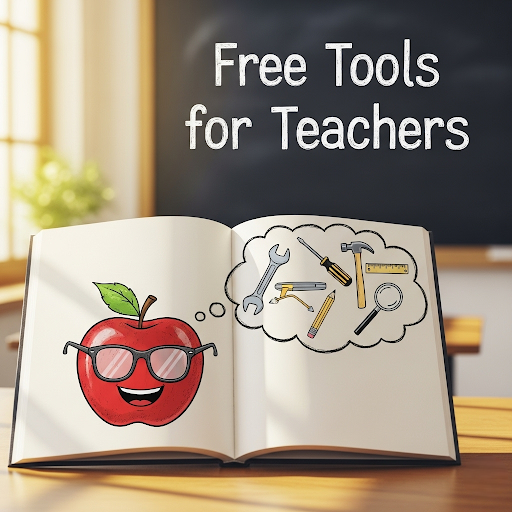
DISCOUNTED EDUCATION PRICING! CALL 1-877-891-8411. We Gladly Accept School Purchase Orders!

Teachers in 2025 face more challenges than ever: growing class sizes, increased demands for personalization, and the pressure to keep students engaged in both physical and digital classrooms. Budgets remain tight, but the demand for high-quality resources hasn’t gone away.
That’s where free EdTech tools step in. From interactive learning platforms to classroom management apps, today’s teachers have access to an incredible range of no-cost resources. The key question is:
👉 Which free tools actually make a difference in student learning and teacher productivity?
This blog answers that question by highlighting the top 10 free tools every teacher should try in 2025, along with insights on how to use them effectively in real classrooms.
What it is: A free platform for designing posters, presentations, infographics, and worksheets.
Why teachers love it: Canva for Education gives teachers and students access to premium templates at no cost.
Questions teachers ask:
Pro Tip: Pair Canva with your classroom’s poster printer to bring student projects to life on a large scale.
What it is: A tool that transforms lessons into interactive experiences with polls, quizzes, VR field trips, and more.
Why teachers love it: It boosts engagement by making students active participants rather than passive listeners.
Questions teachers ask:
What it is: An online space where students can post notes, links, images, and videos.
Why teachers love it: It works like a collaborative wall—perfect for brainstorming, group projects, or exit tickets. Padlet is great.
Questions teachers ask:
What it is: A quiz-based game platform where students compete in real time.
Why teachers love it: Kahoot! turns review sessions into exciting competitions.
Questions teachers ask:
Pro Tip: Use Kahoot! at the end of a unit to reinforce key ideas before an assessment.
What it is: A Microsoft-owned platform that lets students record and share video responses.
Why teachers love it: It’s like TikTok for learning—short videos that encourage creativity and communication.
Questions teachers ask:
What it is: Similar to Kahoot!, but students can complete quizzes at their own pace.
Why teachers love it: It works for homework, in-class reviews, or even fun competitions.
Questions teachers ask:
What it is: A platform that connects teachers, parents, and students with messaging, behavior tracking, and portfolios.
Why teachers love it: It promotes positive behavior and makes parent communication simple.
Questions teachers ask:
What it is: A tool that lets teachers embed questions and notes into videos.
Why teachers love it: It transforms passive watching into active learning.
Questions teachers ask:
What it is: A free app offering immersive museum tours, cultural experiences, and even AR features.
Why teachers love it: It brings art, history, and science to life without leaving the classroom.
Questions teachers ask:
What it is: A free project management tool that uses boards, lists, and cards.
Why teachers love it: It works for lesson planning, group projects, and keeping track of to-do lists.
Questions teachers ask:
With so many options available, teachers often ask:
The rise of AI, VR, and gamification means free tools will keep evolving in 2025. Many companies now understand that giving teachers robust free versions builds loyalty and spreads adoption.
Prediction: By 2026, we’ll see even more AI-powered free platforms that personalize learning, automate grading, and support multilingual classrooms.
For educators, this evolution means access to cutting-edge tools without financial barriers, enabling them to create dynamic, equitable, and innovative learning environments. By embracing these free resources, teachers can focus more on inspiring students and less on administrative burdens, paving the way for a more connected and impactful educational future.
Recommendations for Teachers:
By 2026, the continued evolution of these technologies will likely make free tools indispensable, empowering educators to deliver personalized, engaging, and inclusive learning experiences like never before.
In 2025, the best free educational tools do much more than simply cut costs—they revolutionize classroom dynamics by saving valuable time, boosting student engagement, fostering creativity, and promoting seamless collaboration. These innovative platforms empower educators to create vibrant, interactive learning environments that inspire students and streamline teaching workflows.
For teachers looking to enhance their classrooms this year, the key is to start small. Select one or two tools from this curated list of Khttps://blog.tcea.org/free-tools-new-teachers-2025/
, tailored to meet diverse educational needs. Experiment with them in your lessons, observe how your students respond, and gather feedback to refine your approach. Gradually integrate these tools into your teaching toolkit to build a more dynamic, inclusive, and effective learning experience that sparks curiosity and drives academic success.
Top Pick for Creativity: Canva for Education
Top Pick for Engagement: Kahoot!
Top Pick for Collaboration: Padlet